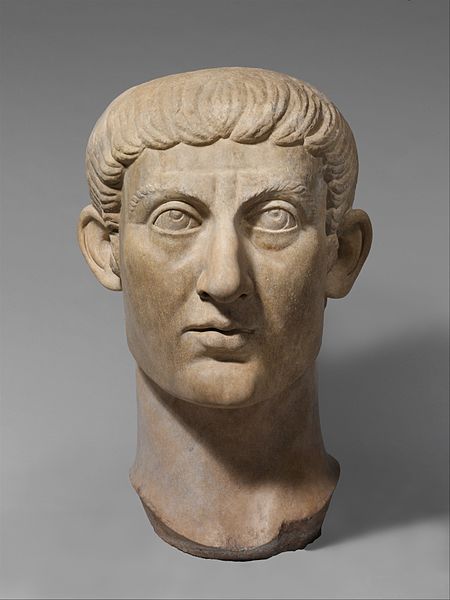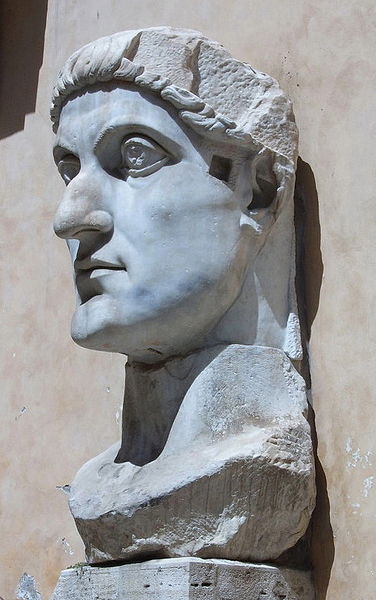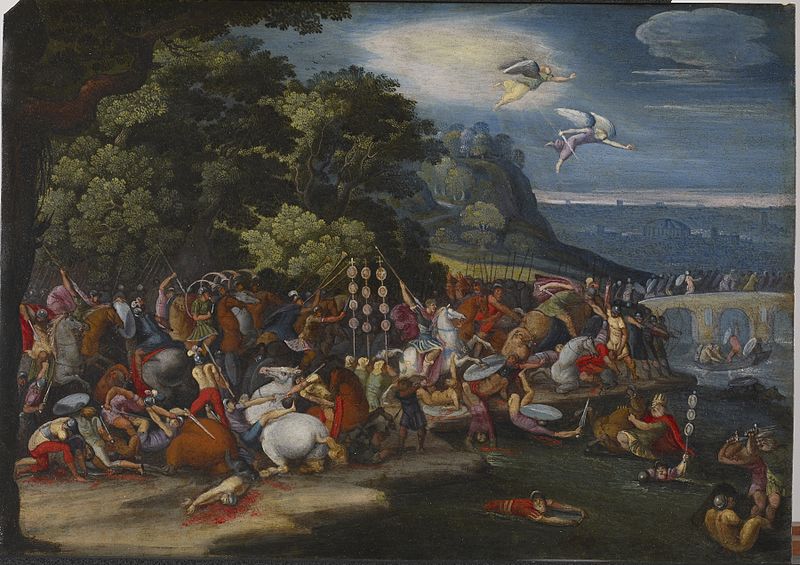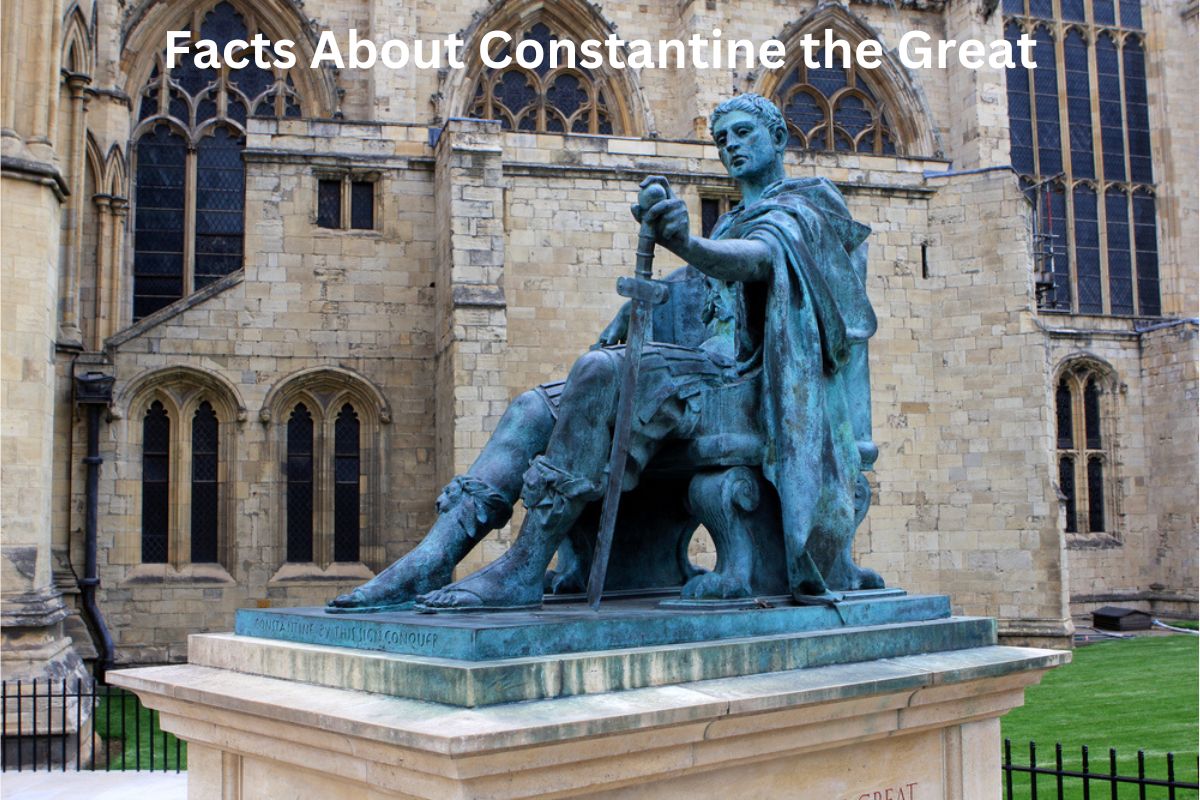Constantine the Great, born Flavius Valerius Constantinus in 280 AD in Naissus (modern-day Niš, Serbia), was a Roman emperor who ruled from 306 to 337 AD. Constantine rose through the ranks in the Roman military and was proclaimed emperor by his troops in 306 AD.
His reign was marked by military conflicts, including civil wars against rival claimants to the throne. He died in 337 AD, leaving behind a complex legacy that shaped the course of Christianity and the Roman Empire.
Constantine’s influence on the spread of Christianity and the institutionalization of the religion within the empire was profound and laid the groundwork for the future development of Western civilization.
Emperor Constantine Facts
1. Constantine the Great, also known as Flavius Valerius Constantinus, was a Roman emperor who ruled from 306 to 337 AD
Constantine the Great, also known as Flavius Valerius Constantinus, was a Roman emperor who ruled from 306 to 337 AD. He is one of the most renowned and influential figures in Roman history.
Also Read: Constantine Accomplishments
Constantine’s reign marked a significant turning point in the history of the Roman Empire, particularly due to his embrace of Christianity and the profound impact it had on the subsequent development of the Western world.

2. Constantine was born on February 27, around the year 280 AD
Constantine was born on February 27, around the year 280 AD, in Naissus (modern-day Niš, Serbia) in the province of Moesia. His birthplace was located in the region known as Illyricum, which was part of the Eastern Roman Empire.
At the time of Constantine’s birth, the Roman Empire was facing various internal and external challenges, including political instability and threats from external barbarian tribes.
3. Constantine came from a mixed background
Constantine came from a mixed background. His father, Constantius Chlorus, was a Roman general who served under the emperors Diocletian and Maximian. Constantius Chlorus held high military positions and achieved some success in his campaigns.
His mother, Helena, was a woman of humble origins. While there is limited historical information about Helena, she gained prominence later in life when Constantine became emperor, and she was venerated as a saint by the Eastern Orthodox Church.
4. Constantine initially served in the Roman military under Emperor Diocletian
Constantine initially served in the Roman military under Emperor Diocletian. He showed exceptional military skills and rose through the ranks, eventually becoming a military tribune. Constantine gained valuable experience and garnered respect among his fellow soldiers, which would prove crucial in his later bid for power.

5. In 306 AD, after the death of Emperor Constantius Chlorus, Constantine’s troops proclaimed him emperor in York, England
In 306 AD, after the death of Emperor Constantius Chlorus, Constantine’s troops proclaimed him emperor in York, England. This move was not initially recognized by the other Roman rulers, as the empire was divided into several regions ruled by different emperors.
However, Constantine’s military successes and political maneuvering enabled him to secure his position as the sole ruler of the Western Roman Empire.
Constantine faced several challenges to his authority, including rival claimants to the throne, such as Maxentius in Rome and Licinius in the East. He engaged in military campaigns to assert his dominance and successfully defeated his rivals, solidifying his position as the sole ruler of a unified Roman Empire.
6. One of the most significant events associated with Constantine is the Battle of the Milvian Bridge, which took place in 312 AD

One of the most significant events associated with Constantine is the Battle of the Milvian Bridge, which took place in 312 AD. Constantine, facing off against Maxentius, famously saw a vision of the Christian Chi-Rho symbol in the sky before the battle.
According to the historian Eusebius of Caesarea, Constantine heard the words “in hoc signo vinces” (“in this sign, you will conquer”) and interpreted the vision as a divine sign supporting his cause. Inspired and emboldened by this vision, Constantine ordered his soldiers to adorn their shields with the Chi-Rho symbol and went on to win the battle.
This victory significantly enhanced Constantine’s reputation and furthered his association with Christianity.
7. In 313 AD, Constantine issued the Edict of Milan, which granted religious toleration to Christians
In 313 AD, Constantine issued the Edict of Milan, along with Licinius, his co-emperor in the East. The edict granted religious toleration to Christians and officially ended the persecution of Christians within the Roman Empire.
The edict aimed to promote religious harmony and restore confiscated Christian properties. It allowed Christians to openly practice their faith without fear of persecution and marked a significant shift in the empire’s religious policy.
The Edict of Milan played a crucial role in establishing Christianity as a legitimate and protected religion within the Roman Empire. It set the stage for Constantine’s subsequent efforts to promote and institutionalize Christianity, leading to its eventual rise as the dominant religion of the empire.
The edict was an essential step towards the legalization and acceptance of Christianity and fostered an environment in which the religion could flourish.
8. Constantine played a significant role in the Council of Nicaea in 325 AD
Constantine played a significant role in the Council of Nicaea in 325 AD. He convened this ecumenical council to address the Arian controversy, a theological dispute concerning the nature of Christ.
The Arians, led by the presbyter Arius, argued that Jesus Christ was a created being and therefore subordinate to God the Father. This view contradicted the orthodox Christian belief in the divinity and equality of Jesus with God.
Constantine presided over the council and actively participated in the discussions, but he did not impose his personal beliefs on the outcome. The council produced the Nicene Creed, which affirmed the orthodox Christian position that Jesus Christ was “of one substance” (consubstantial) with God the Father, effectively refuting Arianism.
While the council’s decision did not resolve all theological debates, it played a crucial role in establishing a foundation for Christian doctrine and unity.
9. Under Constantine’s rule, Christianity gained increasing influence and support within the Roman Empire
Under Constantine’s rule, Christianity gained increasing influence and support within the Roman Empire. He actively promoted the construction of churches and other Christian institutions.
Notably, Constantine ordered the construction of the Church of the Holy Sepulchre in Jerusalem, which was completed in 335 AD. This church was built on the supposed site of Jesus’ crucifixion, burial, and resurrection and became an important pilgrimage site for Christians.
10. Constantine’s reign saw the foundation of Constantinople (present-day Istanbul, Turkey) as a new capital of the Roman Empire in 330 AD
Constantine’s reign saw the foundation of Constantinople (present-day Istanbul, Turkey) as a new capital of the Roman Empire in 330 AD. The decision to establish a new capital was driven by strategic and political considerations. Constantine envisioned Constantinople as a “New Rome” and a symbol of his Christian rule in the East.
Constantinople was strategically located at the crossroads of Europe and Asia, providing easy access to both regions. Its favorable location offered better defense against barbarian invasions and improved control over key trade routes.
The city’s construction incorporated impressive architectural and urban planning features, including the construction of significant Christian monuments and institutions.
11. Constantine’s conversion to Christianity was a complex process, and it is debated among historians
Constantine’s conversion to Christianity was a complex process, and its motivations are debated among historians. Some argue that his conversion was genuine and driven by religious conviction.
They point to his personal religious experiences, such as the vision at the Battle of the Milvian Bridge, as evidence of his sincere belief in Christianity.
Others suggest that political motivations played a significant role in Constantine’s embrace of Christianity. They argue that Constantine recognized the growing influence of Christians within the empire and saw Christianity as a unifying force that could help stabilize his rule.
By aligning himself with the Christian faith, emperor Constantine gained the support of a significant portion of the population and the loyalty of the Christian clergy.
12. Constantine’s rule was not entirely peaceful, and he faced military conflicts throughout his reign
Constantine’s rule was not entirely peaceful, and he faced military conflicts throughout his reign. Despite his efforts to consolidate power and establish a unified empire, challenges and threats persisted. He engaged in several military campaigns to maintain his authority and expand his territory.
One significant military conflict was the civil war against Licinius, the co-emperor ruling the Eastern part of the Roman Empire. Constantine suspected Licinius of plotting against him and launched a series of campaigns against him from 316 to 324 AD.
The conflict culminated in the decisive Battle of Chrysopolis in 324 AD, where Constantine emerged victorious. Licinius was subsequently deposed and executed, solidifying Constantine’s position as the sole ruler of the Roman Empire.
13. Constantine died on May 22, 337 AD, in Nicomedia (modern-day İzmit, Turkey)
Constantine died on May 22, 337 AD, in Nicomedia (modern-day İzmit, Turkey). His death marked the end of an era and had significant consequences for the future of the Roman Empire. Before his death, Constantine took steps to secure the succession by appointing his three sons, Constantine II, Constantius II, and Constans, as co-emperors to rule different regions of the empire.
However, the transition of power did not proceed smoothly. Constantine’s death led to power struggles and conflicts among his sons and other claimants to the throne. These internal divisions weakened the empire and set the stage for further instability in the following decades.
